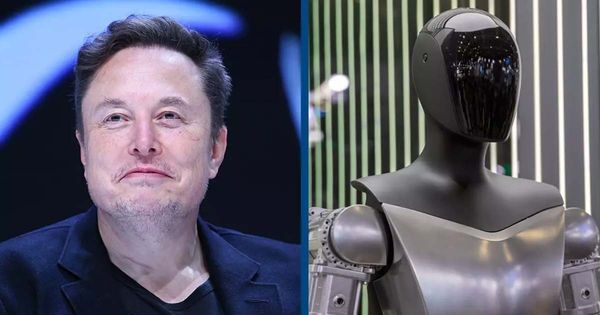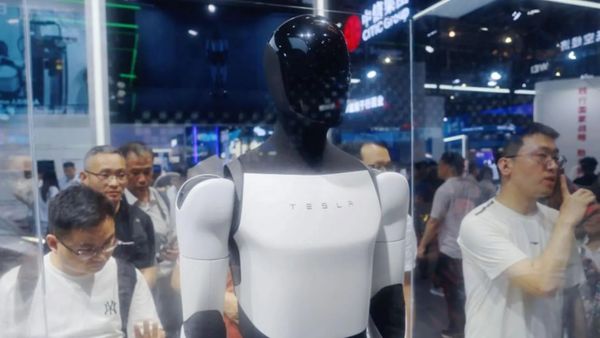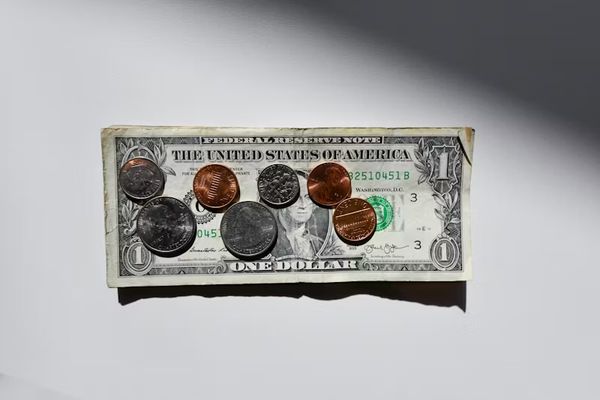Elon Musk, the CEO of Tesla, has recently made a groundbreaking announcement that his company will start producing humanoid robots, called Tesla Bots or Optimus, as early as next year. This initiative aims to introduce robots into Tesla’s operations and make them available for mass production by 2026.

Musk envisions the Tesla Bot to be more than just a robot for industrial use. He sees a future where these robots will serve as useful companions in homes and workplaces, performing various tasks such as basic chores, babysitting, and even car repairs. The initial production will be limited, but Musk anticipates that it could eventually scale up to around 20 billion robots worldwide.
The Tesla Bot, also known as Optimus Gen 2, was first introduced in 2021 and showcased in Tesla’s AI Day in 2022. This robot is designed to handle dangerous, repetitive, and mundane tasks, utilizing technology similar to Tesla’s electric vehicles. With object recognition and decision-making algorithms, these robots can become valuable assistants, resembling the semi-independent robotic characters from science fiction.
According to Musk, the production of Tesla Bots will begin on a small scale next year, initially for use within Tesla factories. The goal is to ramp up production by 2026 and make the Tesla Bot available to other companies and eventually individual consumers. While Musk is known for setting ambitious goals that sometimes face delays, he remains optimistic about the widespread adoption of these robots.

The primary objective of the Tesla Bot is to undertake tasks that are tedious or unsafe for humans. Standing at 1.7 meters tall and weighing approximately 56 kilograms, these robots can carry heavy objects, assist in warehouse operations, and perform household chores like watering plants and moving items around the house. Musk envisions these robots evolving into friendly companions, similar to popular robots from the Star Wars universe like R2-D2 and C-3PO, becoming a common sight in homes alongside other smart devices.
While the potential of the Tesla Bot is undeniable, it also raises concerns about job displacement and safety. Critics worry about the implications for human employment in manual labor industries if there will be up to 20 billion humanoid robots in circulation. Furthermore, some experts doubt whether Tesla can deliver on its ambitious production goals within the projected timelines, considering Musk’s previous delays and setbacks with other projects such as self-driving cars and robo-taxis.

Another factor to consider is the cost of innovation. The estimated price for owning a Tesla Bot is around $20,000, aiming to make these robots accessible enough to become a common household item. Competition in developing humanoid robots is fierce, with other companies like Honda and Boston Dynamics in the race, driving significant innovation and advancements in the field.
Tesla’s move into robotics comes at a time when the company is looking to diversify its business amid declining demand for its electric vehicles. With a recent dip in profits, Tesla aims to reduce costs and expand its AI capabilities. The development of the Tesla Bot could become a key factor in staying ahead of competitors in the tech industry.
Elon Musk’s announcement about the upcoming production of Tesla Bots marks a significant step toward a future dominated by AI-driven automation. By integrating these robots into everyday life and industrial settings, Tesla has the potential to redefine human interaction with technology. However, the success of this venture depends on meeting ambitious production goals, addressing safety concerns, and proving the usefulness of these robots for the average consumer.
While the future of humanoid robots holds both promise and uncertainty, Musk’s vision continues to push the boundaries of what’s possible. As production begins next year, all eyes will be on Tesla to see if they can turn this sci-fi concept into a practical reality.











